Evolution of Management Cybernetics and Viable System Model
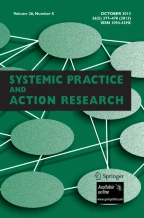
The Viable System Model have pulled in system specialists’ interests lately. This field could help system analyzers and designers to deal with systems unpredictability and help them to handle dynamic evolving situations. This paper investigates Viable System Model recorded and late research patterns. To start with, presenting and creating verifiable pattern of this model has been examined. At that point late distribution patterns have been checked on by reviewing 1000 most essential and cited works Based on Google Scholar rank. Cybernetics developed in the Josiah Macy conferences, beginning in 1946. At that point, Wiener presented the field of Cybernetics and Ashby, Von Forester, and McCulloch built up this field as a train. This Management Cybernetics was presented in 1959 by Beer is a blend of frameworks of control, and management sciences. Beer introduced VSM as an operational model here. Reviewing 1000 most cited publications demonstrates the presentation of this field achieved maturity and further advancement turned out to be generally under development. In addition, in view of investigated patterns, application of VSM model would now be able to be firmly alluring.
This is a preview of subscription content, log in via an institution to check access.
Access this article
Subscribe and save
Springer+ Basic
€32.70 /Month
- Get 10 units per month
- Download Article/Chapter or eBook
- 1 Unit = 1 Article or 1 Chapter
- Cancel anytime
Buy Now
Price includes VAT (France)
Instant access to the full article PDF.
Rent this article via DeepDyve
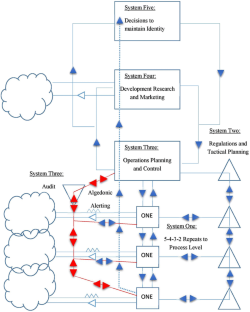
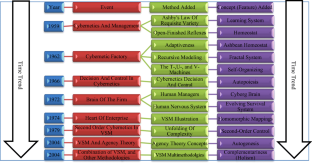
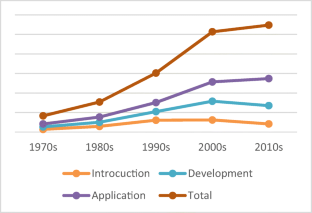
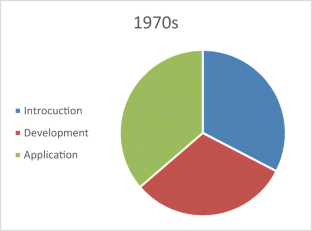
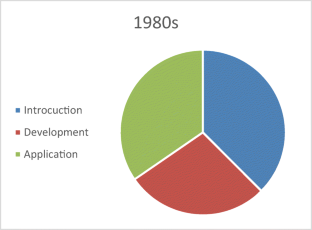
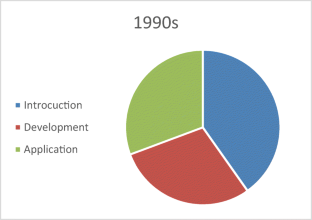
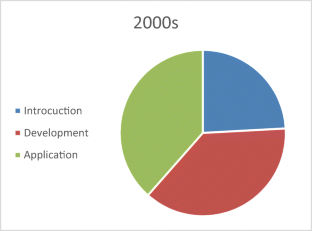
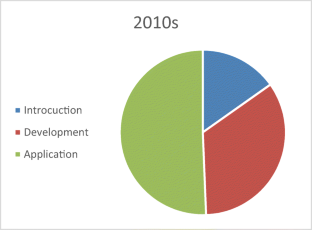
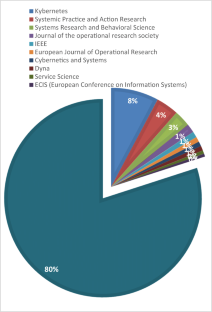
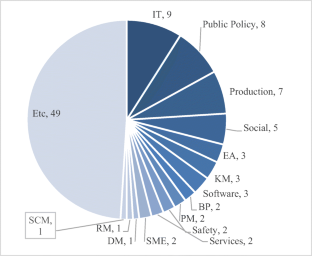
Similar content being viewed by others
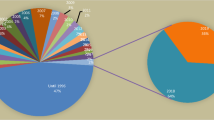
A comprehensive and systematic study on the cybernetics management systems
Article 27 October 2022

Epilogue: Systems Approaches and Systems Practice
Chapter © 2020

Advancement of Decision Support Systems, Complex Systems and Empirical Studies Based on the Fifteenth ICMSEM Proceedings
Chapter © 2021
Explore related subjects
References
- Ashby WR (1952a) Can a mechanical chess-player outplay its designer? Br J Philos Sci 3(9):44–57. https://doi.org/10.1093/bjps/III.9.44ArticleGoogle Scholar
- Ashby WR (1952b) Design for a Brain. Chapman & Hall.. https://doi.org/10.1002/bs.3830260302/abstract
- Ashby WR (1956) An introduction to cybernetics. New York, J. Wiley (Vol. 16). https://doi.org/10.2307/3006723
- Ashby WR (1958) Requisite variety and its implications for the control of complex systems. Cybernetica 1(2):83–99 Google Scholar
- Ashby WR (1999) Design for a Brain an introduction to. Director 80(4):295. https://doi.org/10.2307/3006723Google Scholar
- Beer S (1959) What has cybernetics to do with operational research? J Oper Res Soc 10(1):1–21. https://doi.org/10.1057/jors.1959.1ArticleGoogle Scholar
- Beer S (1970) Brain of the firm: a development in management cybernetics. McGraw-Hill
- Beer S (1972) Brain of the firm: a development in management cybernetics. McGraw-Hill. Retrieved from http://books.google.com/books/about/Brain_of_the_firm.html?id=T_A9AAAAIAAJ&pgis=1
- Beer S (1975) Platform for Change. Wiley
- Beer S (1979) The heart of Enterprise. J Oper Res Soc Wiley. https://doi.org/10.2307/2581902
- Beer S (1981) The Viable System Model: Its Provenance. Development, Methodology, and Pathology
- Beer S (1984) The viable system model: its provenance, development, methodology and pathology. J Oper Res Soc 35(1):7–25. https://doi.org/10.1057/jors.1984.2ArticleGoogle Scholar
- Beer S (1994a) Beyond dispute: the invention of team Syntegrity. Wiley. Retrieved from http://books.google.com/books?id=VwVPAAAAMAAJ
- Beer S (1994b) Cybernetics of National Development evolved from work in Chile. In Zaheer Science Foundation. Retrieved from http://vidyardhi.org/Resources/books/beer.pdf. Accessed 25 Oct 2017
- Brecher C, Müller S, Breitbach T, Lohse W (2013) Viable system model for manufacturing execution systems. Procedia CIRP 7:461–466. https://doi.org/10.1016/j.procir.2013.06.016ArticleGoogle Scholar
- Conant RC, Ross Ashby W (1970) Every good regulator of a system must be a model of that system†. Int J Syst Sci 1(2):89–97 ArticleGoogle Scholar
- Dominici G, Palumbo F (2013) Decoding the Japanese lean production system according to a viable systems perspective. Syst Pract Action Res. https://doi.org/10.1007/s11213-012-9242-z
- Espejo R (2013) Organisational Cybernetics as a Systemic Paradigm : Lessons from the Past -Progress for the Future. Bus Syst Rev 2(2):1–9 Google Scholar
- Espejo R, Harnden R (1990) The viable system model: interpretations of Stafford Beer’s VSM. Wiley (Vol. 44). https://doi.org/10.1016/0377-2217(90)90368-L
- Espinosa A, Harnden R, Walker J (2008) A complexity approach to sustainability – Stafford Beer revisited. Eur J Oper Res 187(2):636–651. https://doi.org/10.1016/j.ejor.2007.03.023ArticleGoogle Scholar
- Espinosa A, Reficco E, Martínez A, Guzmán D (2015) A methodology for supporting strategy implementation based on the VSM: a case study in a Latin-American multi-national. Eur J Oper Res 240(1):202–212. https://doi.org/10.1016/j.ejor.2014.06.014ArticleGoogle Scholar
- Flood RL, Jackson MC (1991) Critical systems thinking. Springer. https://doi.org/10.1007/b102400.pdf
- Haslett T (2000) Using VSM to integrate SD modelling into an organization context
- Haslett T, Oka M (2000) Using VSM to integrate SD modelling into an organization context. Retrieved from http://citeseerx.ist.psu.edu/viewdoc/summary?doi=10.1.1.143.33
- Hoverstadt P (2010) The viable system model. In Systems Approaches to Managing Change: A Practical Guide (pp. 87–133). Springer. https://doi.org/10.1007/978-1-84882-809-4_3
- Jackson MC (2007) Systems Thinking: Creative Holism for Managers, vol. 6. Wiley
- Leonard A (2009) The viable system model and its application to complex organizations. Syst Pract Action Res 22(4):223–233. https://doi.org/10.1007/s11213-009-9126-zArticleGoogle Scholar
- McCulloch W (1965) Embodiments of mind. Cambridge, Mass., M.I.T. Press [©1965]. https://mitpress.mit.edu/books/embodiments-mind-1
- Mignot P (2000) Metaphor: a paradigm for practice-based research into’career’. British Journal of Guidance & Counselling. https://doi.org/10.1080/713652314
- Mingers J (1980) Towards an appropriate social theory for applied systems thinking: critical theory and soft systems methodology. J Appl Syst Anal
- Mingers J (1997a) Multi-paradigm multimethodology
- Mingers J (1997b) Towards critical pluralism
- Mingers J (2000) What is it to be critical? undergraduates. Manag Learn 2000
- Mingers J (2001) Combining IS Research Methods: Towards a Pluralist Methodology. Inf Syst Res 12(3):240–259. https://doi.org/10.1287/isre.12.3.240.9709ArticleGoogle Scholar
- Mingers J (2006) Realising Systems Thinking: Knowledge and Action in Management Science: knowledge and action in management science
- Mingers J (2010) Multimethodology. Wiley Encyclopedia of Operations Research and Management Science
- Mingers J, Brocklesby J (1997) Multimethodology: Towards a framework for mixing methodologies. Omega 25(5):489–509. https://doi.org/10.1016/S0305-0483(97)00018-2ArticleGoogle Scholar
- Morgan G (1980) Paradigms, metaphors, and puzzle solving in organization theory. Adm Sci Q, 1980
- Munro I, Mingers J (2002) The use of multimethodology in practice—results of a survey of practitioners. J Oper Res Soc
- Preece G, Shaw D, Hayashi H (2013) Using the viable system model (VSM) to structure information processing complexity in disaster response. Eur J Oper Res 224(1):209–218. https://doi.org/10.1016/j.ejor.2012.06.032ArticleGoogle Scholar
- Preece G, Shaw D, Hayashi H (2015) Application of the Viable System Model to analyze communications structures: A case study of disaster response in Japan. Eur J Oper Res
- Rahayu S, Zulhamdani M (2014) Understanding local innovation system as an intelligent organism using the viable system model case study of palm oil industry in North Sumatra Province. Procedia Soc Behav Sci 115:68–78. https://doi.org/10.1016/j.sbspro.2014.02.416ArticleGoogle Scholar
- Reyes A (2001) Second-order auditing practices. Syst Pract Action Res 14(2):157–180 ArticleGoogle Scholar
- Schwaninger M (2004) Methodologies in conflict: achieving synergies between system dynamics and organizational cybernetics. Syst Res Behav Sci 21(4):411–431. https://doi.org/10.1002/sres.649ArticleGoogle Scholar
- Schwaninger M (2006a) The evolution of organizational cybernetics. Scientiae Mathematicae Japonicae
- Schwaninger M (2006b) Intelligent Organizations. Intelligent Organizations: Powerful Models for Systemic Management
- Schwaninger M, Ríos JP (2008) System dynamics and cybernetics: a synergetic pair. Syst Dyn Rev 24(2):145–174. https://doi.org/10.1002/sdr.400ArticleGoogle Scholar
- Schwaninger M, Scheef C (2016) A Test of the Viable System Model: Theoretical Claim vs. Empirical Evidence. Cybern Syst. https://doi.org/10.1080/01969722.2016.1209375
- Vahidi A, Aliahmadi A (2018) Describing the necessity of multi-methodological approach for viable system model: Case study of viable system model and system dynamics multi-methodology. Syst Pract Action Res. https://doi.org/10.1007/s11213-018-9452-0
- Wiener N (1948) Cybernetics. Retrieved from http://ems.music.uiuc.edu/courses/tipei/I3/Notes/cybernetics.doc. Accessed 25 Oct 2017
Author information
Authors and Affiliations
- School of Progress Engineering, Iran University of Science and Technology, Tehran, Iran Amin Vahidi
- School of Industrial Engineering, Iran University of Science and Technology, Tehran, Iran Alireza Aliahmad & Ebrahim Teimouri
- Amin Vahidi












